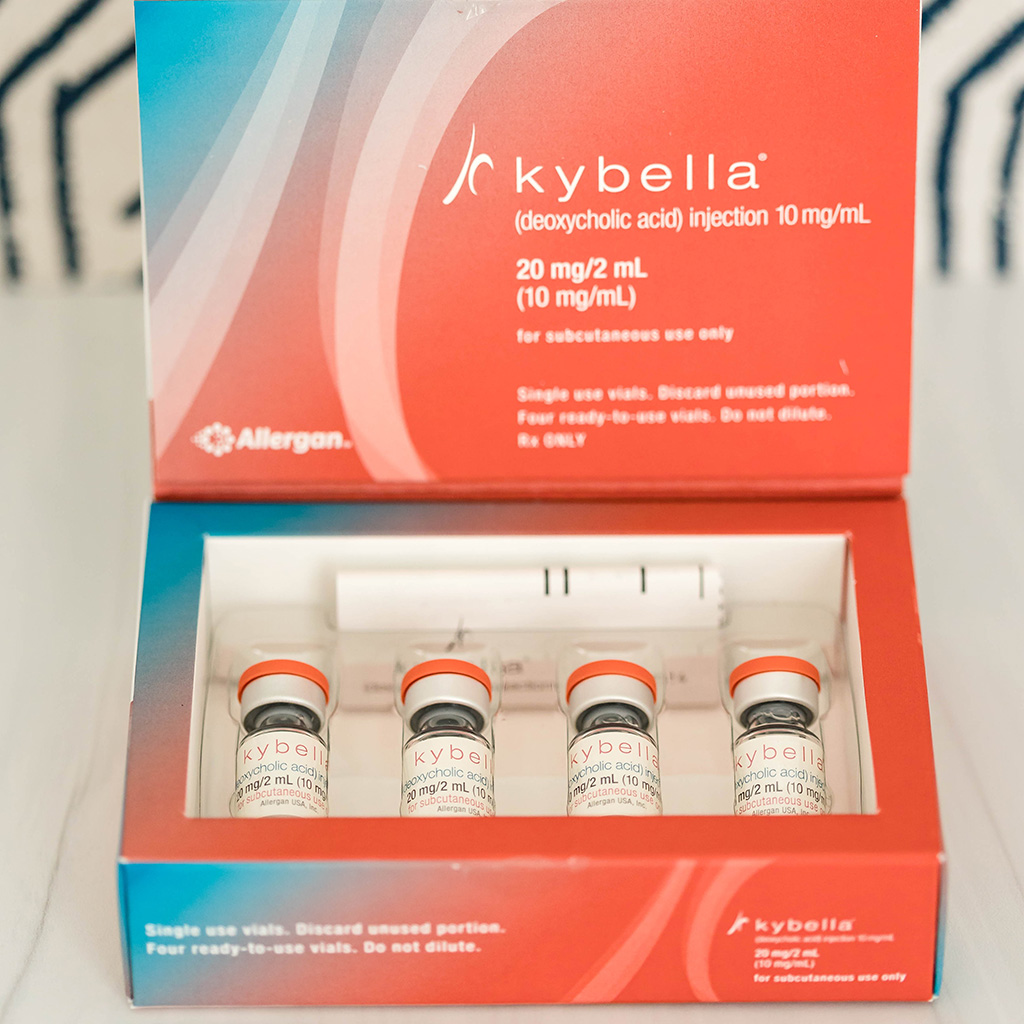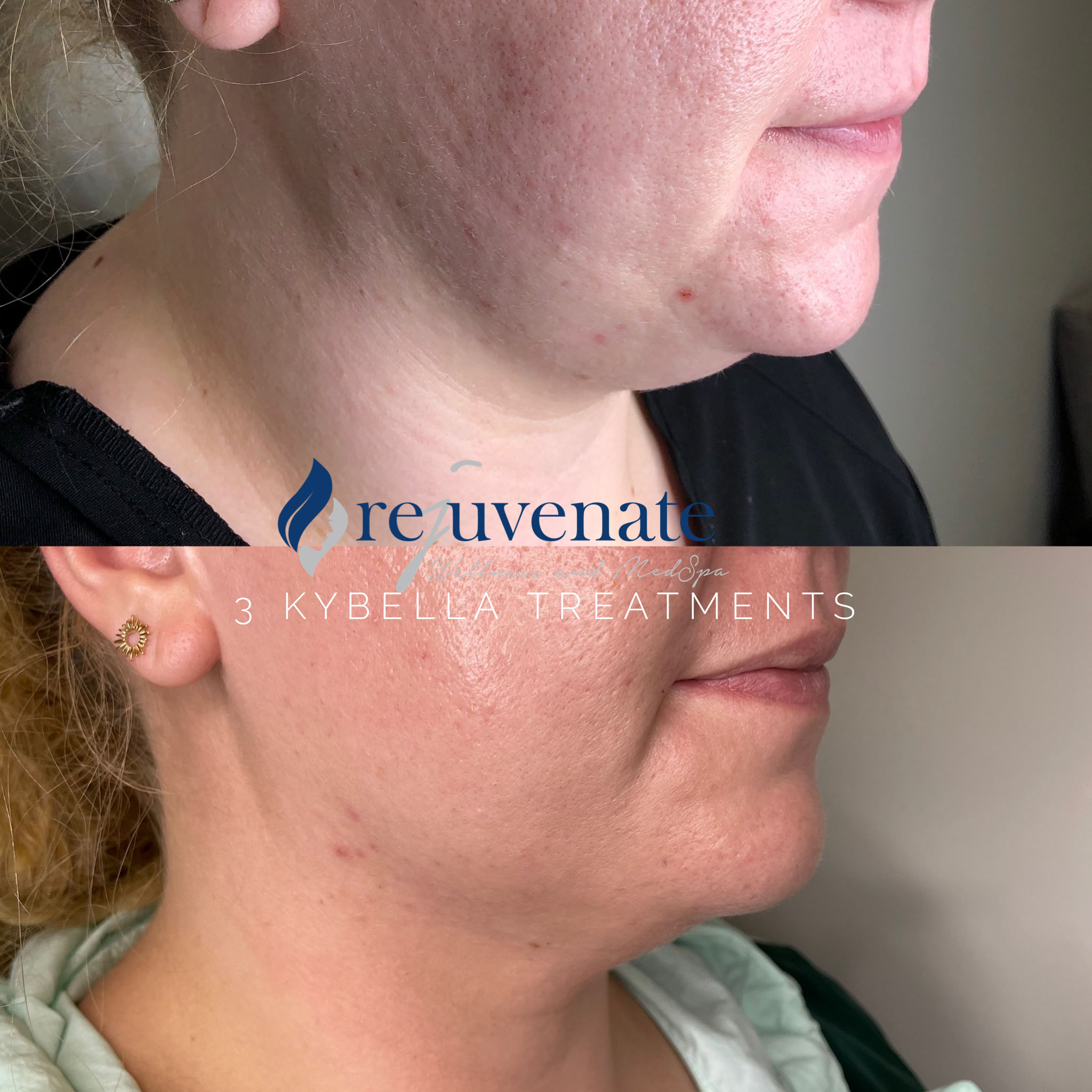Transform Your Profile with KYBELLA®
KYBELLA® is an FDA-approved injectable treatment that helps destroy fat cells under the chin to improve your profile. KYBELLA® is often referred to as the “Mini Liposuction in a Syringe.”
KYBELLA® contains synthetic deoxycholic acid as its active ingredient. Deoxycholic acid is a molecule naturally produced by the body, which aids in breaking down and absorbing dietary fats. KYBELLA® is injected into the stored fat under the chin to destroy fat cells, resulting in a reduction in fullness under the chin. Once these cells are destroyed, they cannot accumulate or store fat, so further treatments are not expected once you reach your aesthetic goal.
Generally, a series of two to four treatments are typically needed to achieve desired results. This revolutionary treatment is making a big difference in people’s lives worldwide! Schedule your KYBELLA® appointment or book a free consultation today.

Before & After

FAQ
KYBELLA® is a procedure that breaks down fat cells and prevents them from accumulating new ones. This is done by injecting deoxycholic acid, which breaks down fat cells. Deoxycholic acid is injected through a needle into the dermis (the skin’s layer below the epidermis) or subcutaneously (underneath the skin).
KYBELLA® is a good option for people with excess neck fat under the chin who want to avoid surgery.
You should start noticing a difference in four to six weeks. You should see satisfactory results about eight weeks after having the suggested number of KYBELLA® injections.
Only KYBELLA®-trained healthcare professionals can administer treatment. Several small injections are given under your chin during each treatment, and the process takes about 15 to 20 minutes. The number of injections you’ll need depends on the amount of fat under your chin and your desired profile.
Yes, they do! The injection of KYBELLA® assists in eliminating fat cells from your body and preventing new fat from forming.
The treated area will swell during the first week or two following treatment and be somewhat painful. However, most patients can resume their daily activities the next day.
